In 1982, Apple co-founder Steve Wozniak hatched an ambitious and very expensive musical plan and committed a sizeable chunk of his sizeable fortune to a musical event, billed as the biggest thing since Woodstock, Wozniak staged a three-day concert in the mountains of San Bernardino County, in Southern California, that featured some of the day's biggest names in music. The "Us Festival" kicked off under scorching conditions on September 3, 1982.
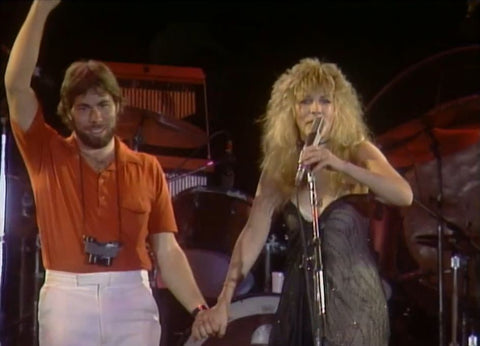
Wozniak, then 32 and on leave from the budding computer giant after a plane crash left him shaken and unable to form memories for half a year, spent 18 months and $13 million preparing what he dubbed "the Super Bowl of rock." He intended it as a unifying antidote to the just-ended Me Decade - a benevolent we-are-the-world uprising evident in the event's name and furthered via satellite links to the Soviet Union during each fest.
Sparing no expense, Wozniak aimed to bring together many of the top artists of the day, segregated by genre new wave, heavy metal, traditional rock, and enhanced by cutting-edge innovation, including one of the first uses of jumbo video screens at a concert. It also served as Ticketmaster's entree into the Southern California market.
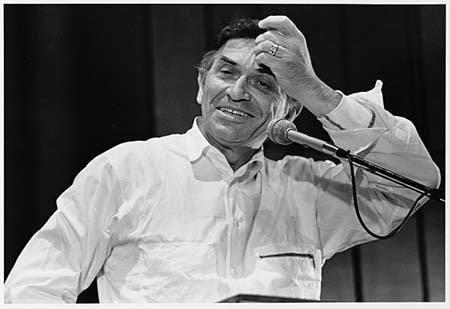 Bill Graham - a legend in his own lifetime
Bill Graham - a legend in his own lifetimePieced together by Bay Area legend Bill Graham, the talent amassed for the first one, Sept. 3-5, played out like several stadium concerts crammed together. It was like the Foreigner-led Summer Strut, held two months earlier at the Big A, or one of Ontario's two California Jams (in '74 and '78) expanded to a long weekend and attracting 425,000 in all, despite sluggish pre-fest ticket sales. Prices: $17 per day, $35 for the weekend.
On the opening day of US '82 alone, capped by the Police before more than 100,000 fans ("one of our biggest shows ever," Copeland contends), presented a staggeringly strong lineup from start to finish. In order of appearance: Gang of Four, the Ramones, the English Beat, Oingo Boingo, the B-52's, Talking Heads and the headliner, mid-tour behind their fourth album, Ghost in the Machine, and in ripping form.

The crowd doubled in size for Day 2, with thousands parking as far as a dozen miles away to bake and dehydrate in near-record 112-degree heat, accompanied by reversed Santa Ana winds and water shortages. Beer went for $1.50, cheeseburgers for $2.75, ham and eggs $4.50.
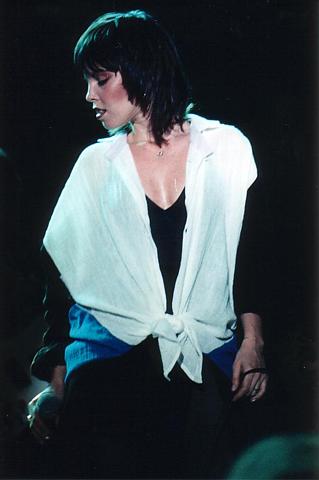 Pat Benatar live on stage Us Festival 1982
Pat Benatar live on stage Us Festival 1982Tom Petty and the Heartbreakers closed that portion, after sets from Santana, Pat Benatar, the Kinks, a surprisingly powerful hour from the Cars, plus Eddie Money and Dave Edmunds.
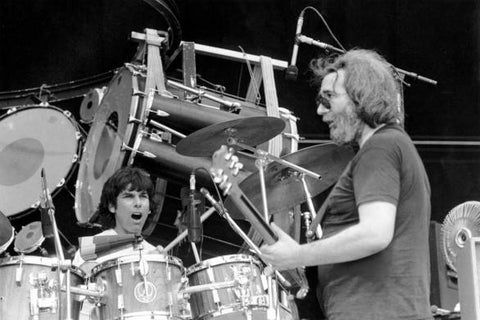
Attendees awoke on Day 3 for breakfast with the Grateful Dead (who encored with the Stones' "Satisfaction") before Jimmy Buffett, Jackson Browne and Fleetwood Mac wrapped it up. One can only imagine how much cocaine was hoovered up across the weekend.
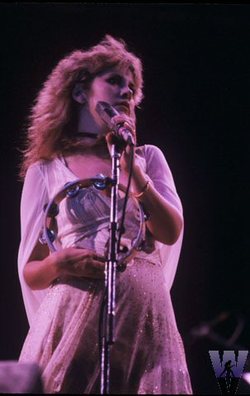 Stevie Nicks playing with Fleetwood Mac at Us Festival 1982
Stevie Nicks playing with Fleetwood Mac at Us Festival 1982There was one related death, when a 23-year-old Santa Rosa man burned in a four-car pileup on I-15 in the wee hours before the fest began. One rape was reported and 67 people out of 2,050 who were medically treated on site had to be transported to nearby hospitals. Authorities considered that a rousing success. So did Wozniak.
"They said we couldn't do it," he told a press gathering at the conclusion of the first fest. "They said it was too expensive, too unwieldy. We proved them wrong. The timing was so right for this type of festival. There is a spirit, a push for unity starting to spread. We tried to capture it. I think we did it.
"We may just have to do this again," he concluded, despite having ultimately lost $5 million on the venture. And they did so, the following year, spending even more money and making an even bigger loss.



